Abstract
1. The extent to which the hyperglaemic and glycogenolytic responses to splanchnic nerve stimulation depend upon the integrity of the hepatic innervation has been investigated in adrenalectomized dogs and cats.
2. In both species maximal stimulation of the hepatic nerves (20 c/s) produced changes in plasma glucose concentration comparable to those which have been found to occur in response to bilateral splanchnic nerve stimulation at the same frequency. Furthermore, the hyperglycaemic response to splanchnic nerve stimulation was very substantially reduced by section of the hepatic nerves, whereas the associated changes in haematocrit and mean aortic blood pressure were not significantly altered.
3. Comparison of the changes in plasma glucose concentration in response to splanchnic or hepatic nerve stimulation at relatively low frequencies (1·0-2·0 c/s) showed that stimulation of either nerve produced closely similar responses in adrenalectomized animals of both species.
4. In adrenalectomized dogs maximal stimulation of the hepatic nerves (20 c/s) for shorter periods (30 sec) caused a significant rise in plasma glucose concentration whereas total occlusion of the portal vein for the same period in the same animals produced no statistically significant hyperglycaemic effect.
5. Maximal stimulation of the hepatic nerves (20 c/s) caused a rapid rise in plasma glucose concentration in hypoglycaemic adrenalectomized cats pretreated with a large dose of insulin (4 u./kg body wt.).
6. It is concluded that the hyperglycaemic response to stimulation of the peripheral ends of the splanchnic nerves in adrenalectomized dogs and cats is directly dependent upon activation of sympathetic efferent fibres to the liver.
Full text
PDF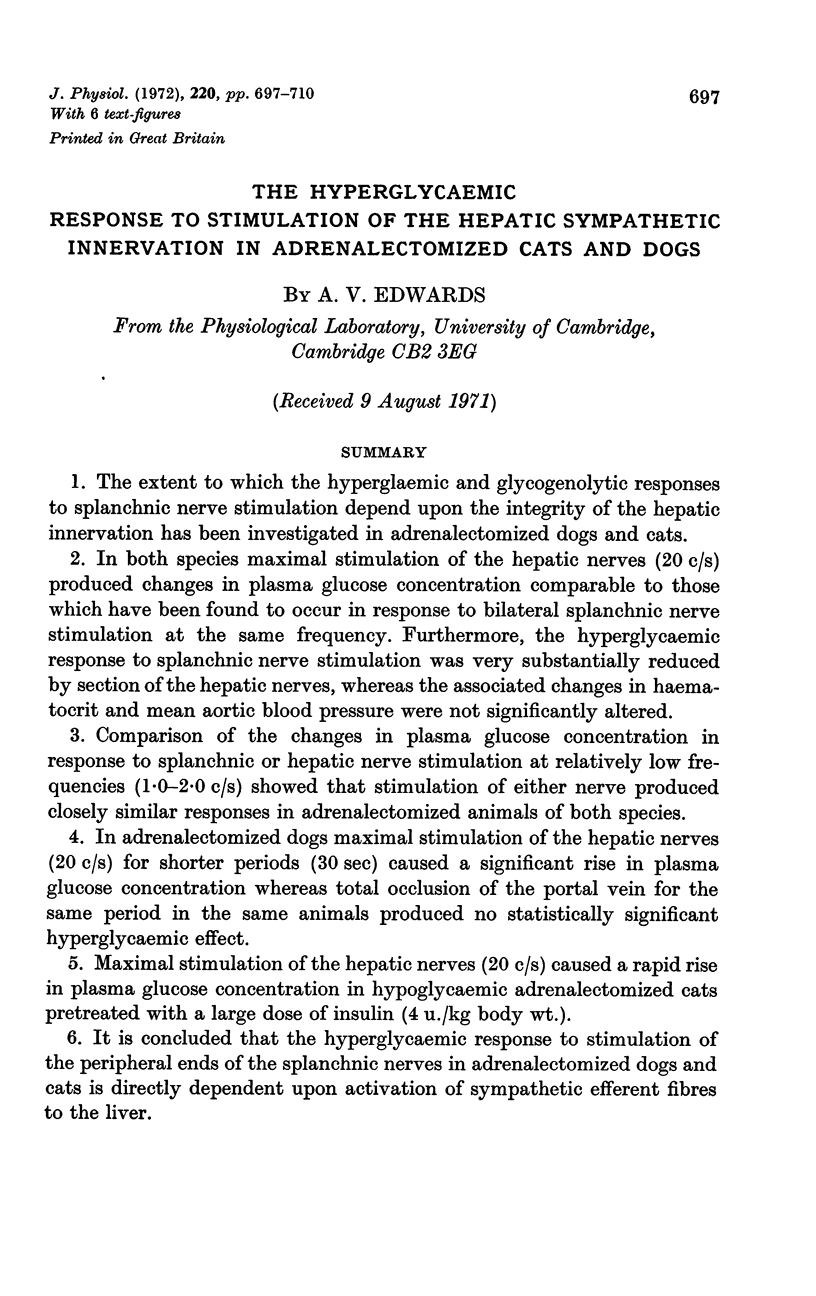
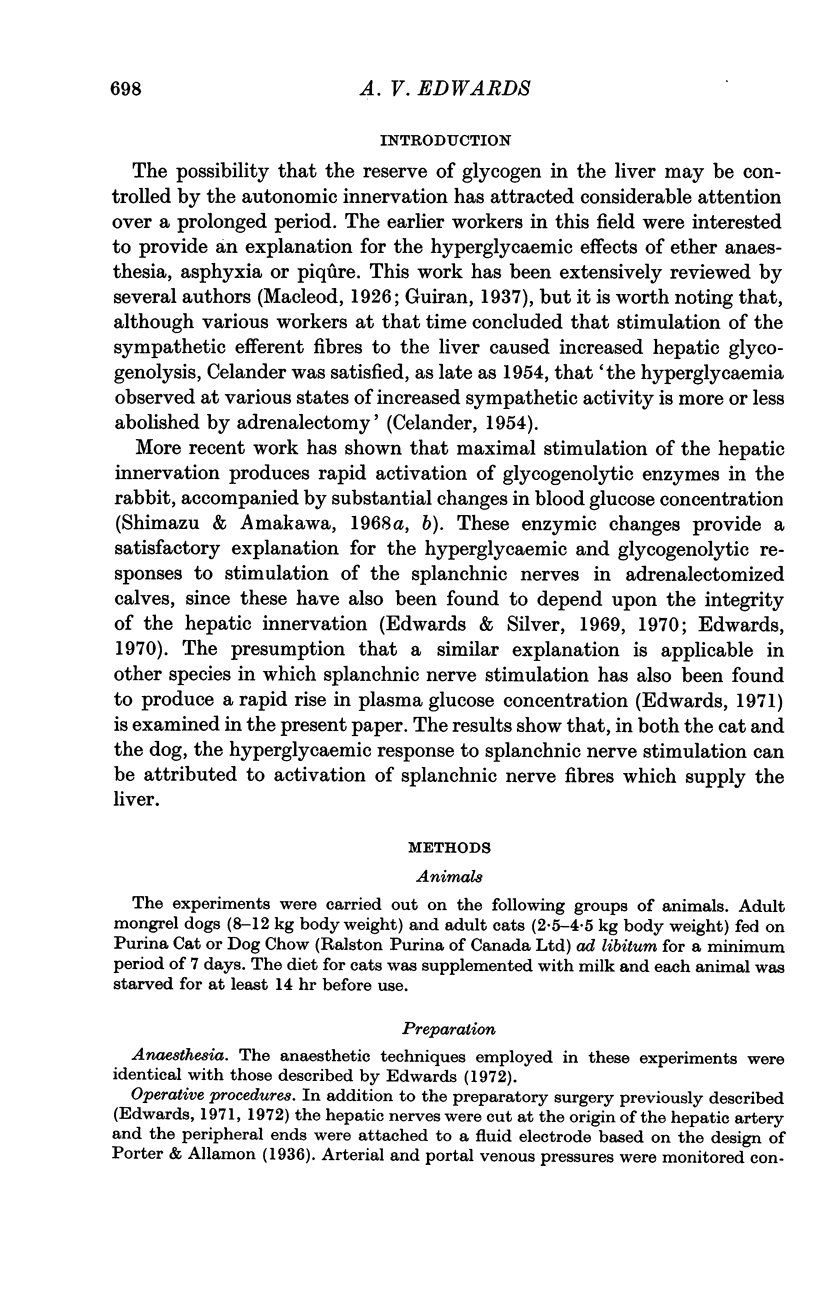
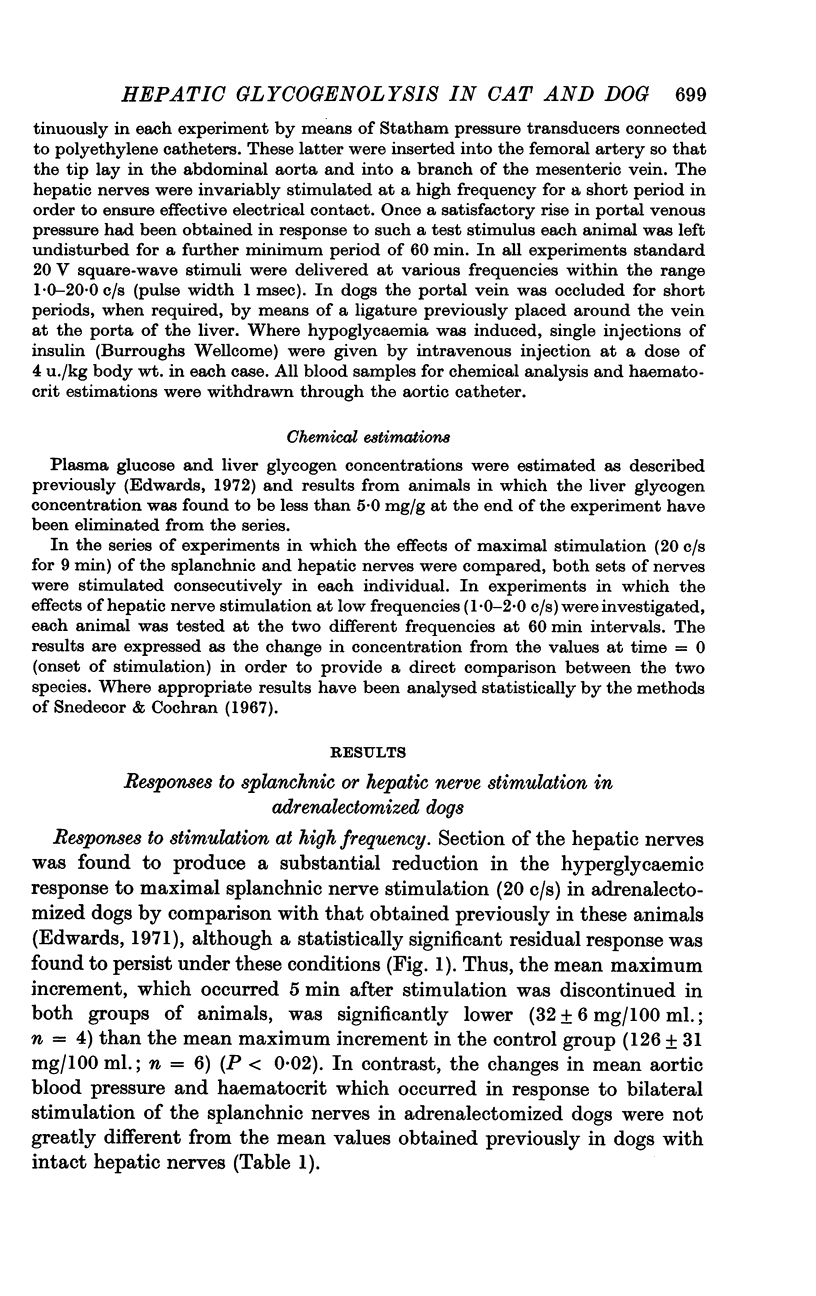
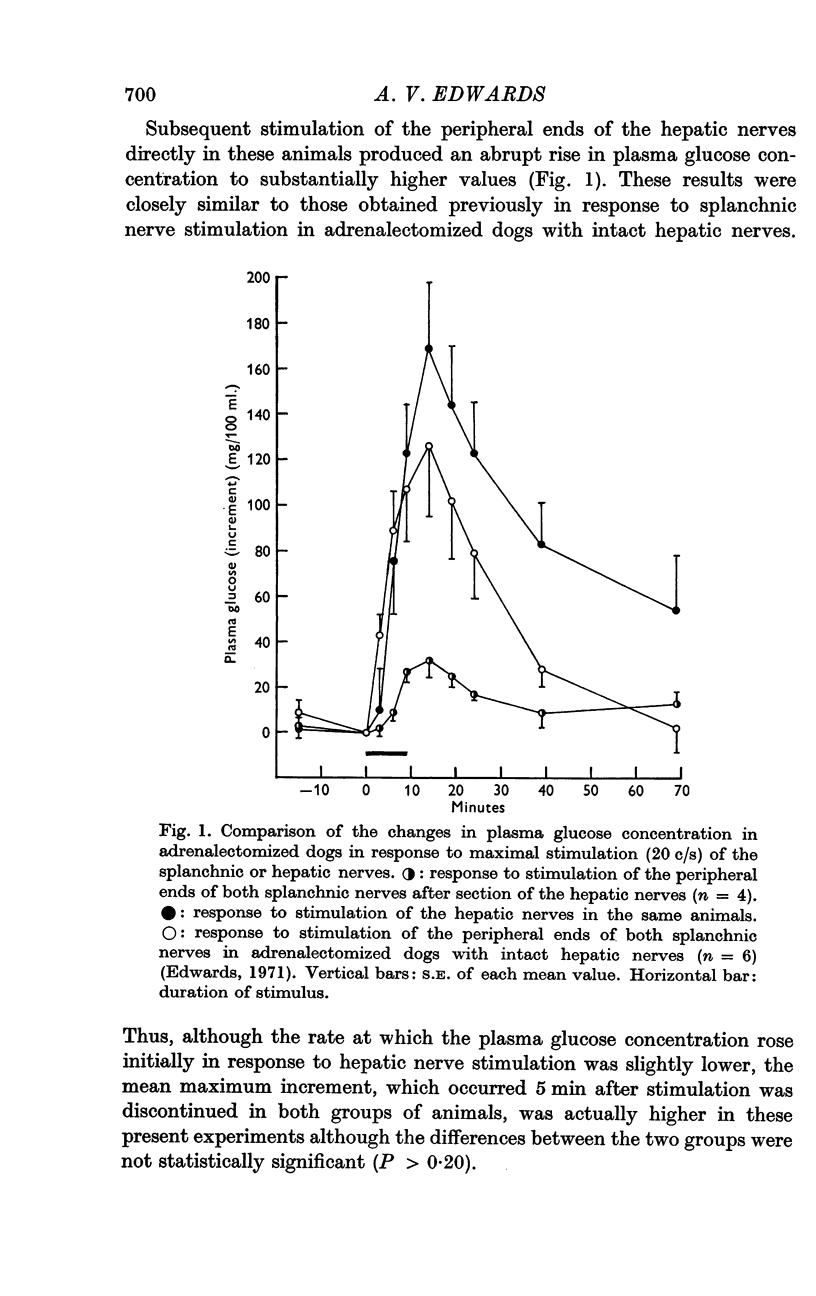

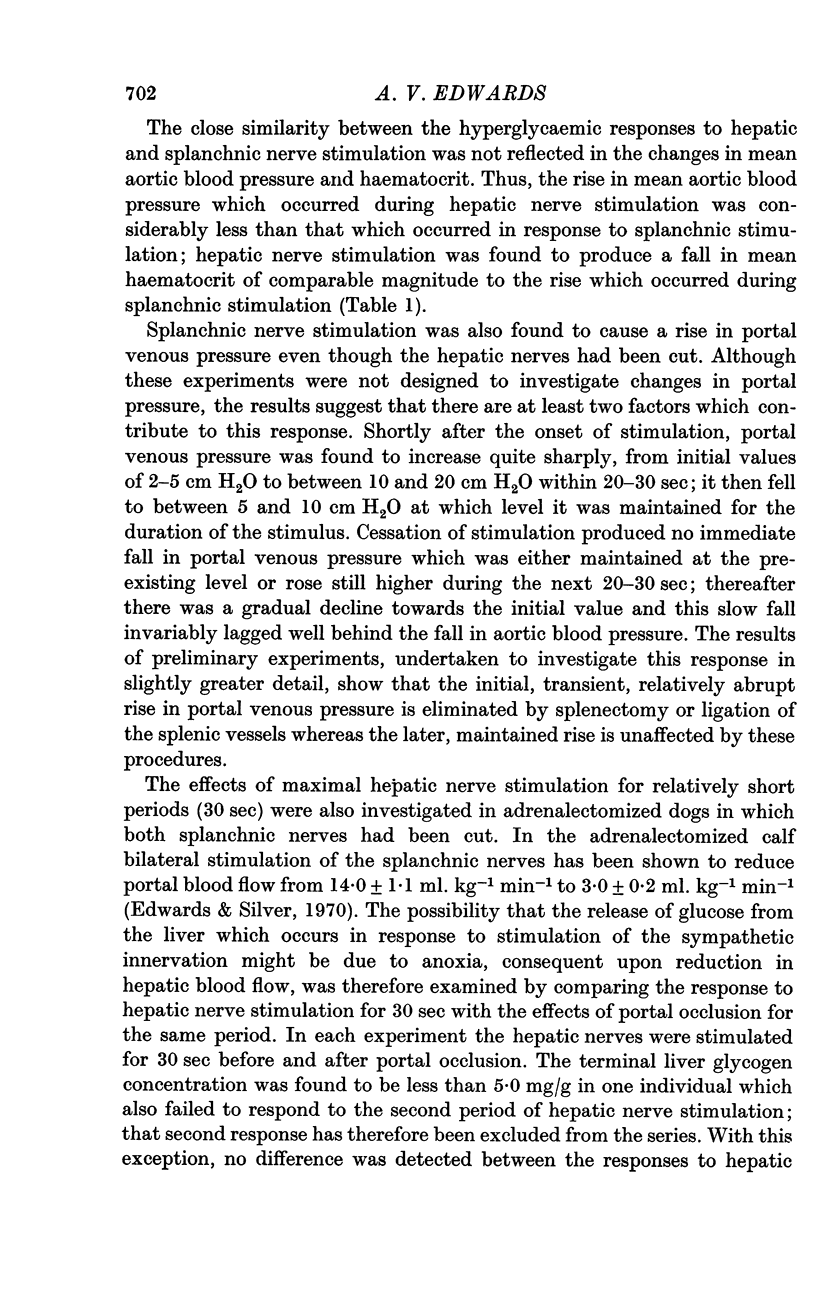
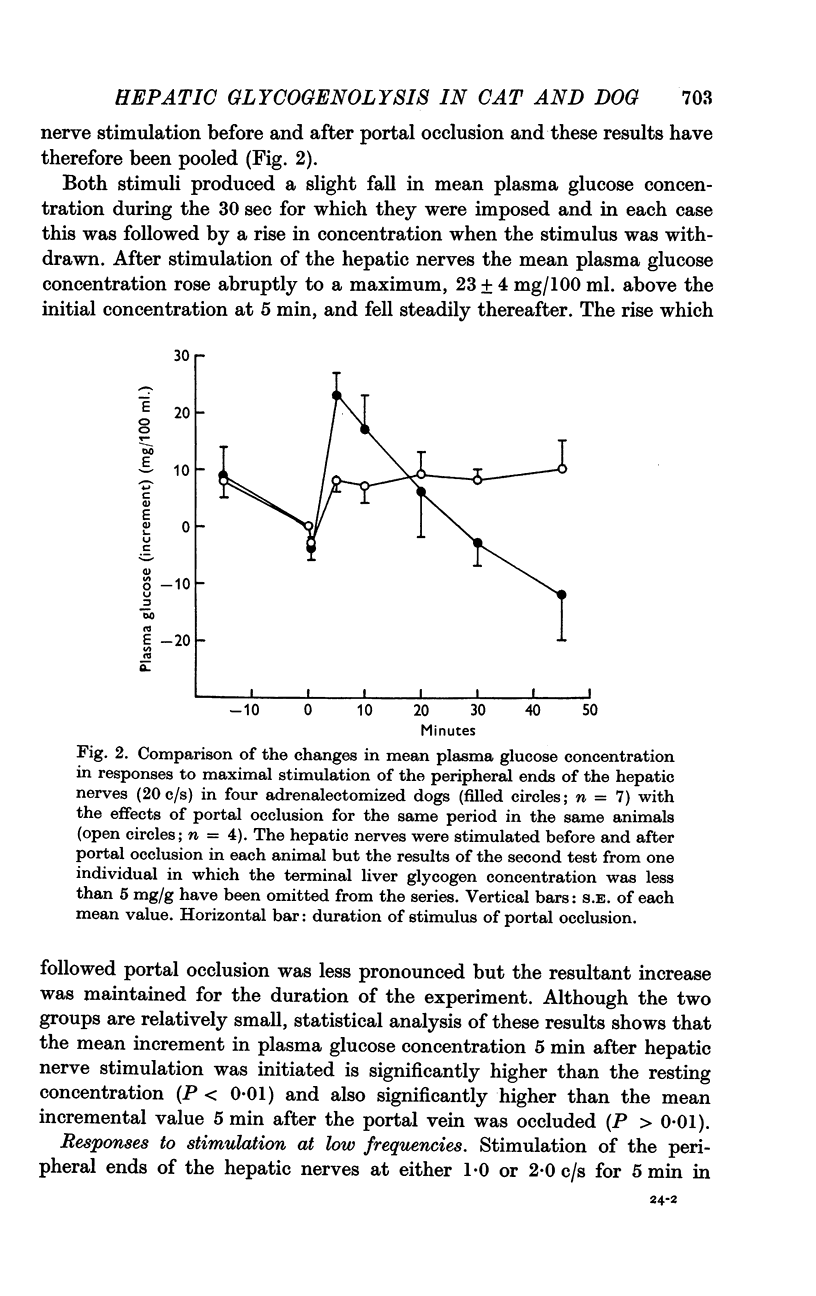
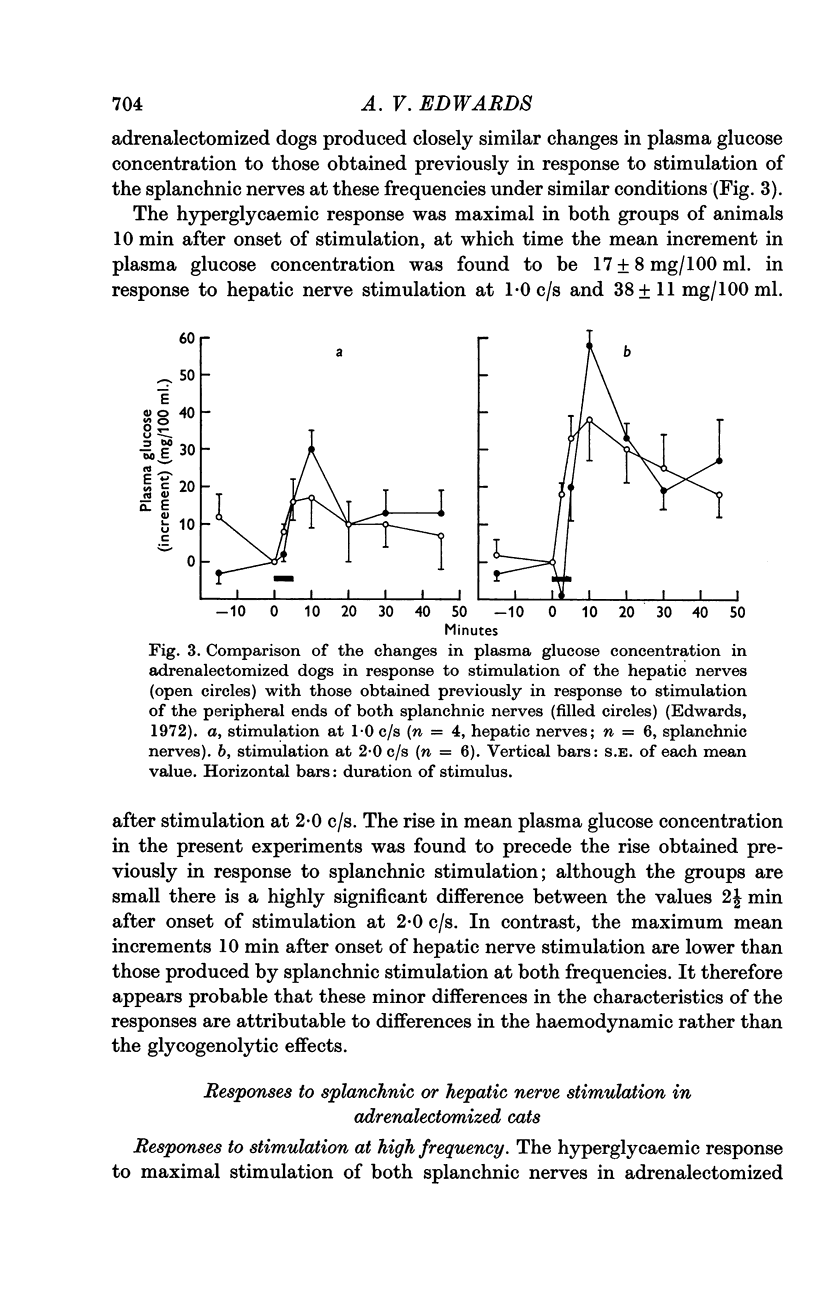
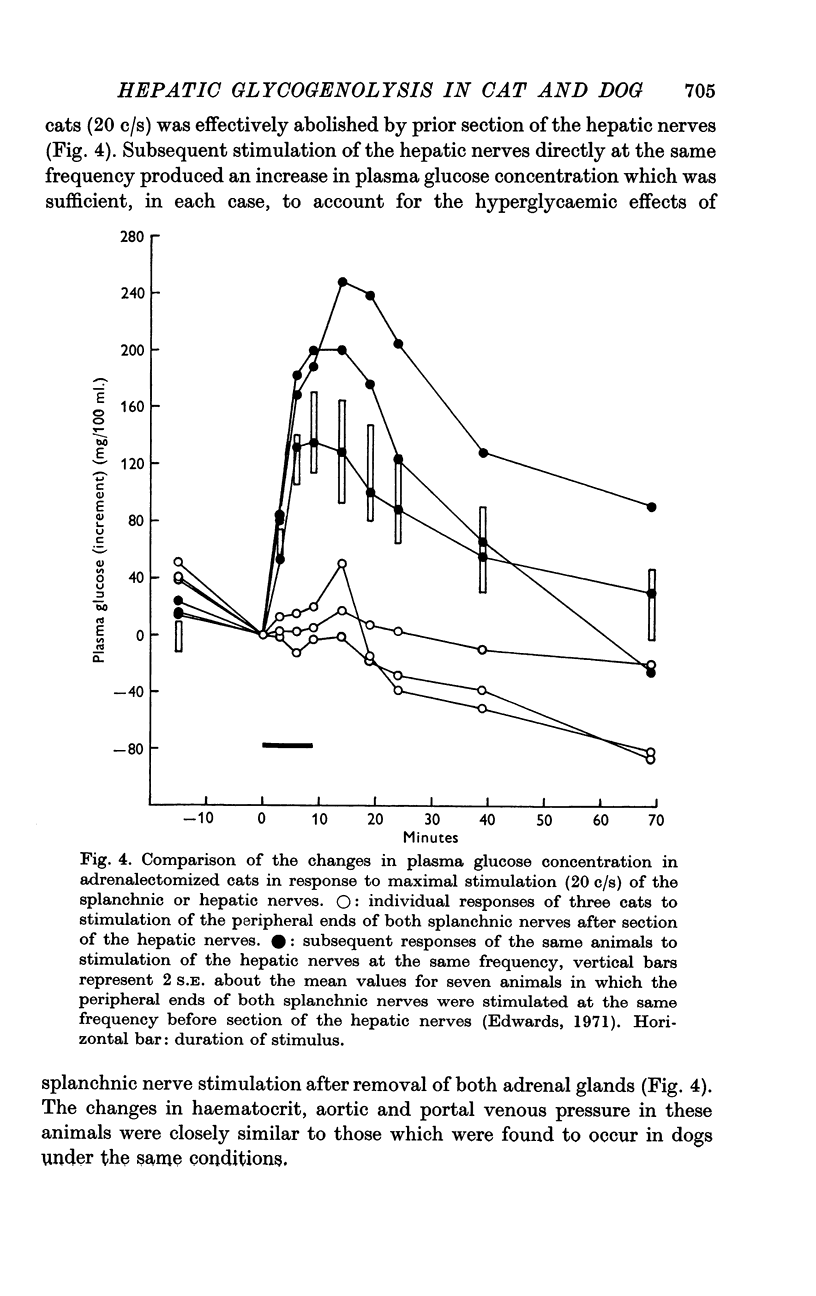
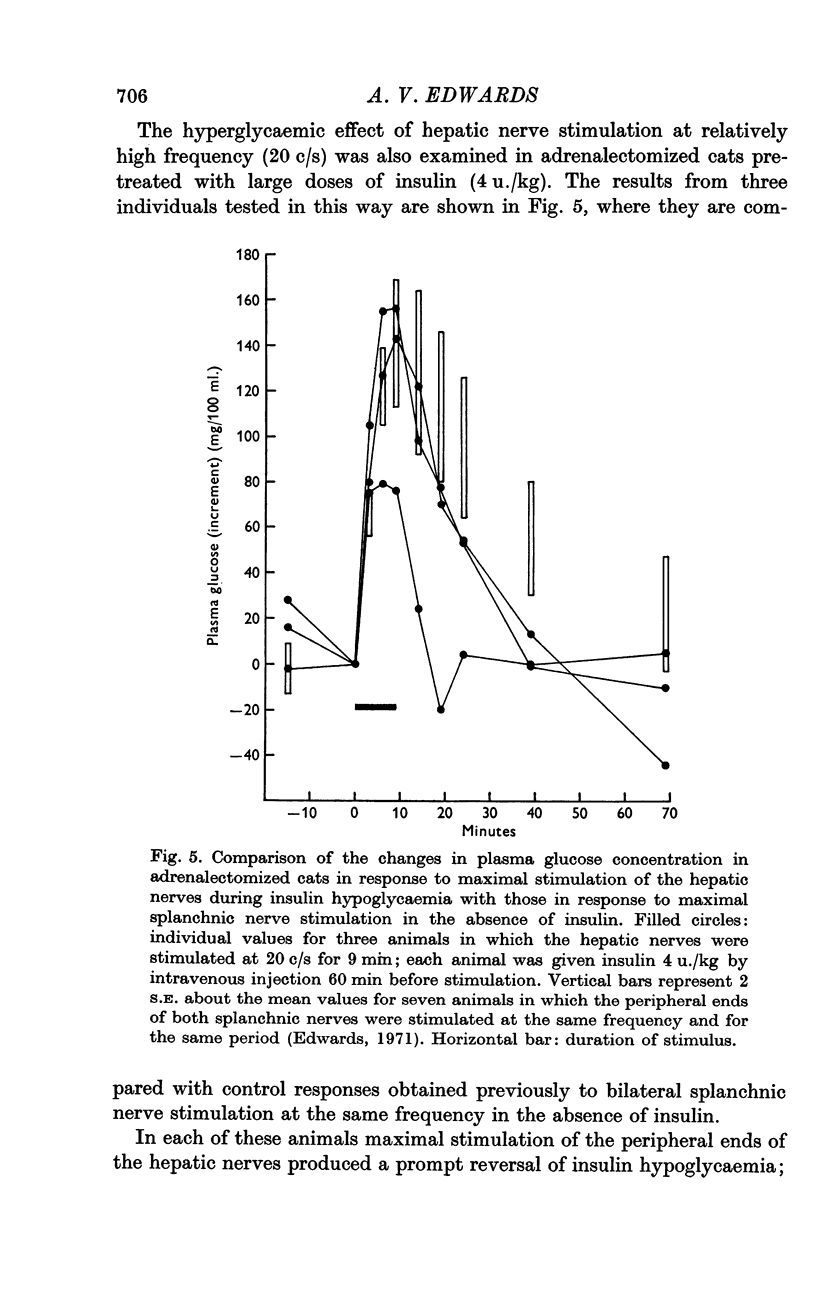
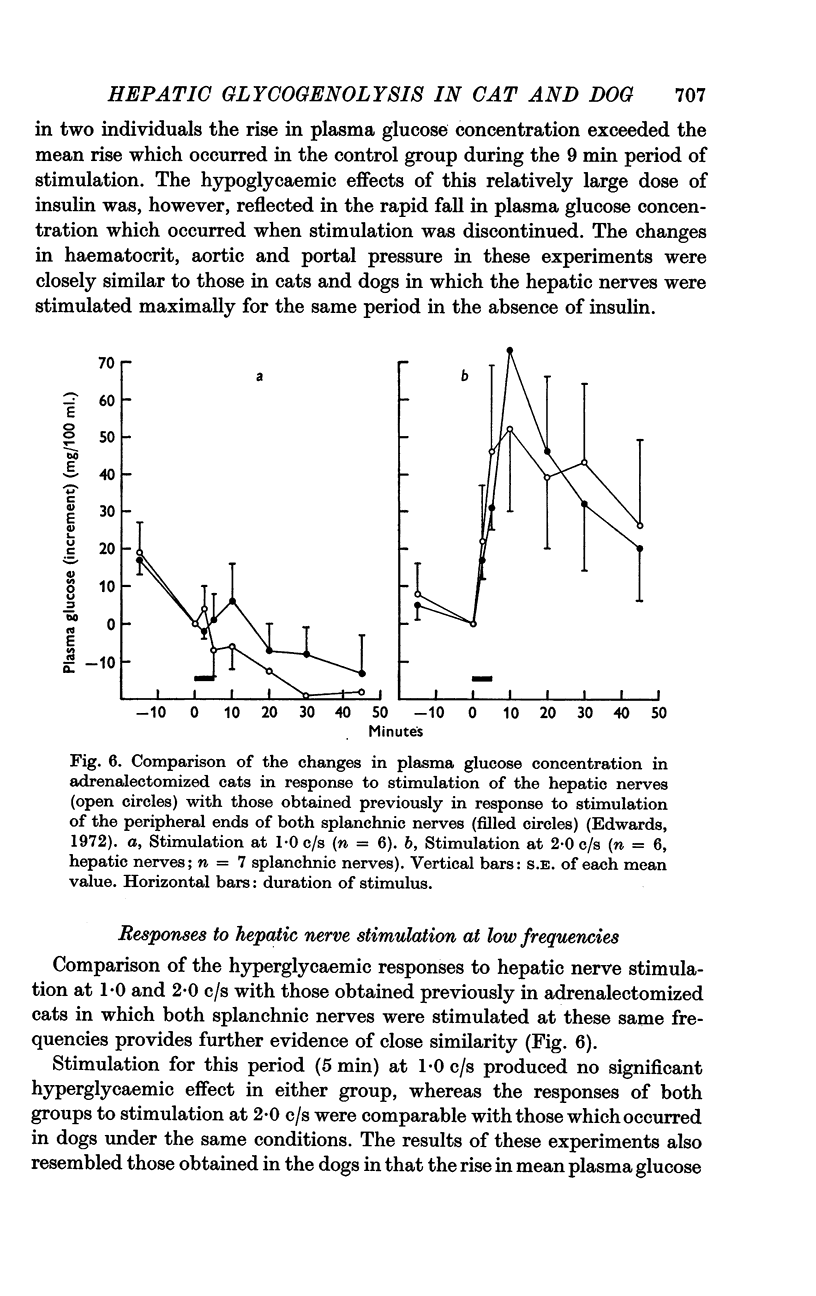
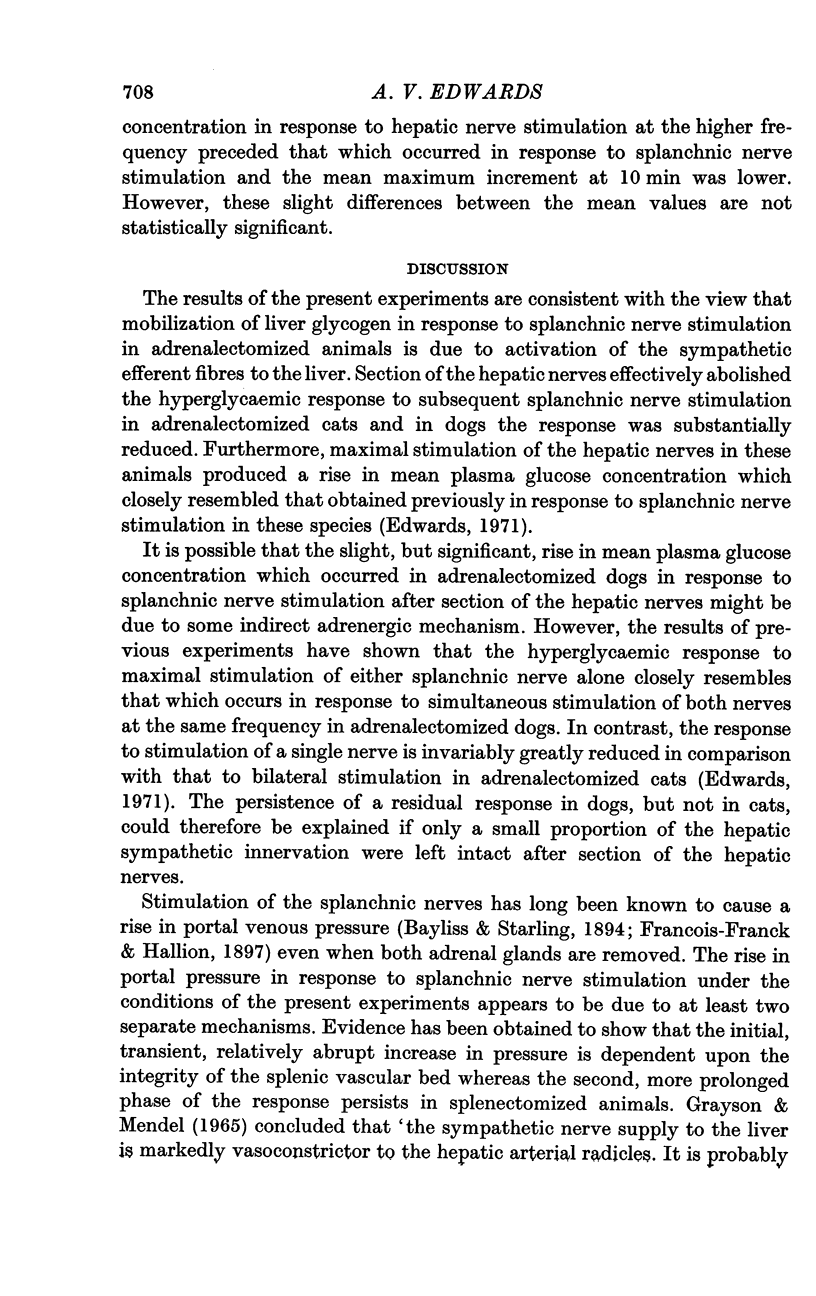
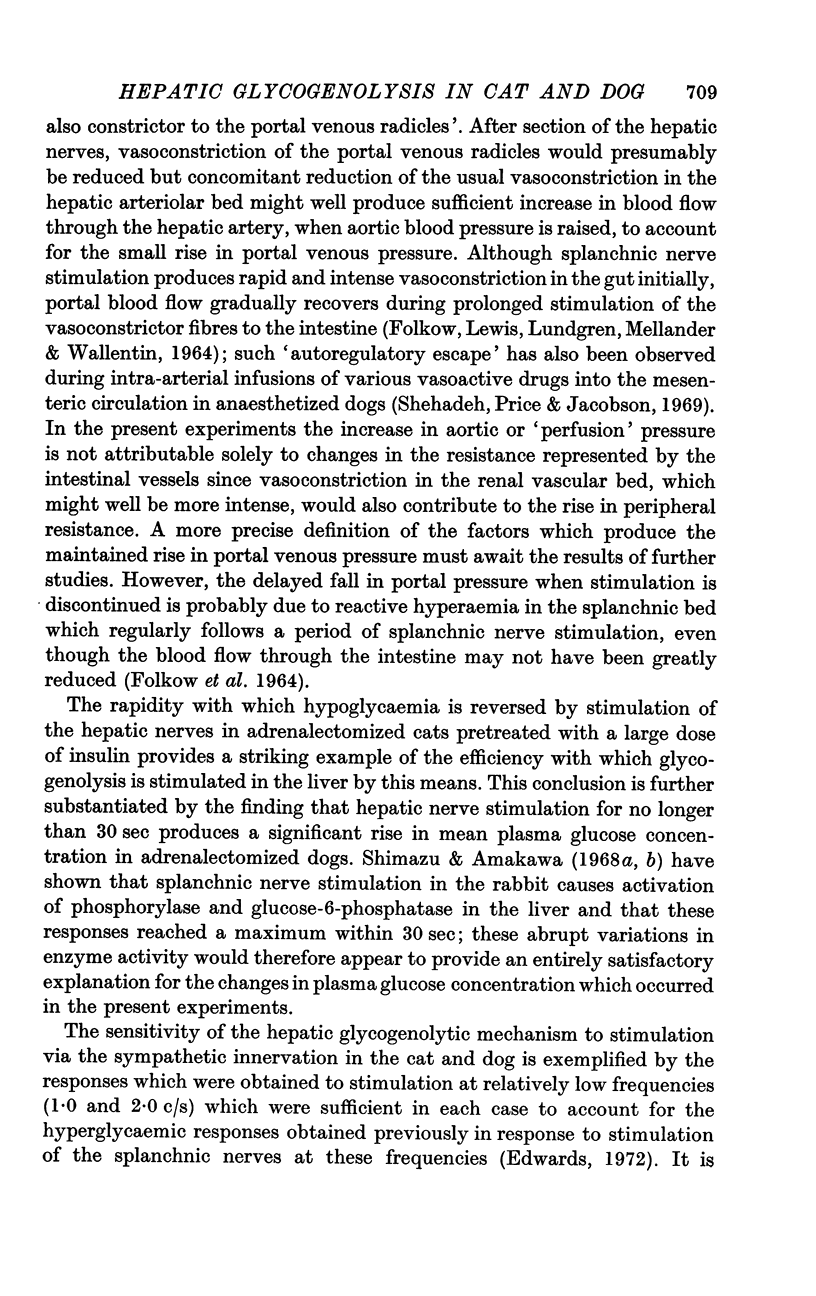
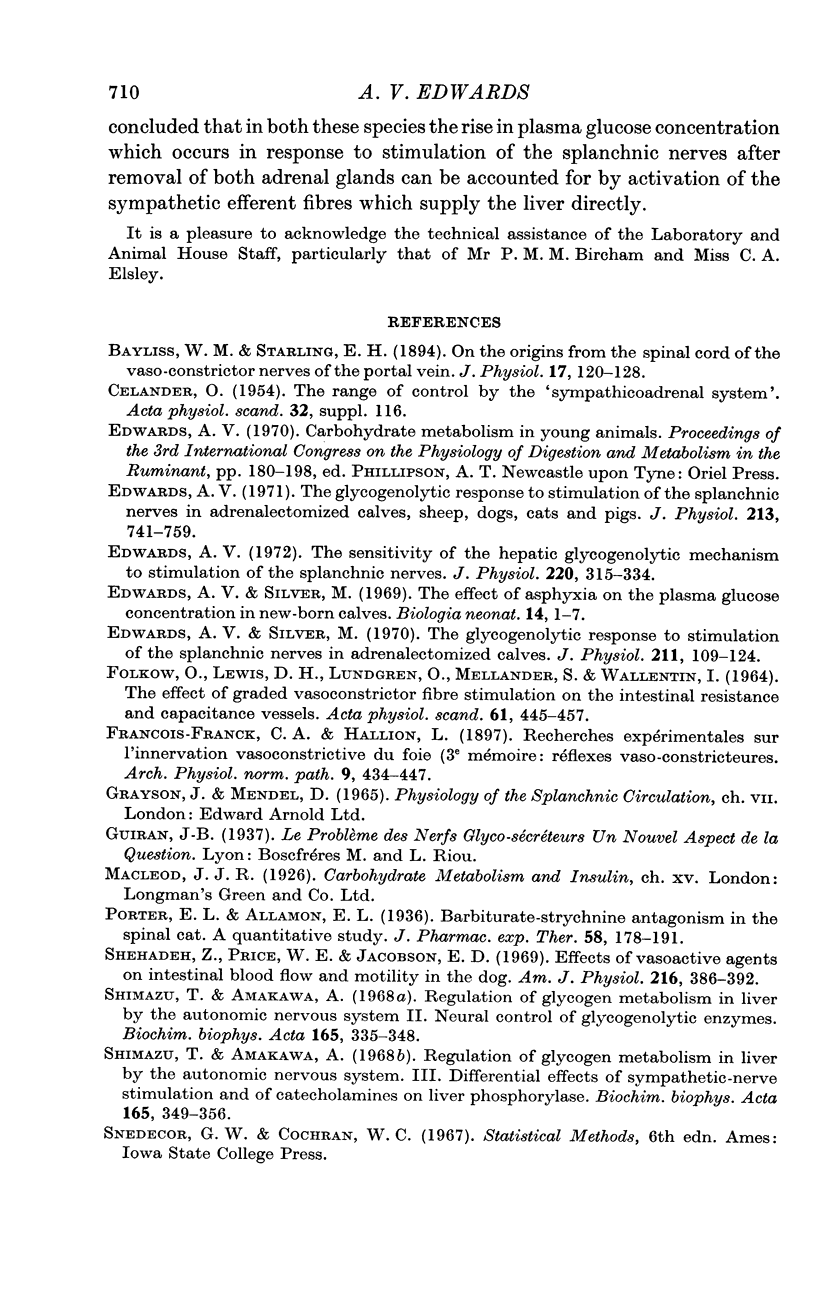
Selected References
These references are in PubMed. This may not be the complete list of references from this article.
- Bayliss W. M., Starling E. H. On the Origin from the Spinal Cord of the Vaso-Constrictor Nerves of the Portal Vein. J Physiol. 1894 Aug 13;17(1-2):120–128. doi: 10.1113/jphysiol.1894.sp000521. [DOI] [PMC free article] [PubMed] [Google Scholar]
- Edwards A. V., Silver M. The glycogenolytic response to stimulation of the splanchnic nerves in adrenalectomized calves. J Physiol. 1970 Nov;211(1):109–124. doi: 10.1113/jphysiol.1970.sp009269. [DOI] [PMC free article] [PubMed] [Google Scholar]
- Edwards A. V. The glycogenolytic response to stimulation of the splanchnic nerves in adrenalectomized calves, sheep, dogs, cats and pigs. J Physiol. 1971 Mar;213(3):741–759. doi: 10.1113/jphysiol.1971.sp009412. [DOI] [PMC free article] [PubMed] [Google Scholar]
- Edwards A. V. The sensitivity of the hepatic glycogenolytic mechanism ot stimulation of the splanchnic nerves. J Physiol. 1972 Jan;220(2):315–334. doi: 10.1113/jphysiol.1972.sp009709. [DOI] [PMC free article] [PubMed] [Google Scholar]
- FOLKOW B., LEWIS D. H., LUNDGREN O., MELLANDER S., WALLENTIN I. THE EFFECT OF GRADED VASOCONSTRICTOR FIBRE STIMULATION ON THE INTESTINAL RESISTANCE AND CAPACITANCE VESSELS. Acta Physiol Scand. 1964 Aug;61:445–457. [PubMed] [Google Scholar]
- Shehadeh Z., Price W. E., Jacobson E. D. Effects of vasoactive agents on intestinal blood flow and motility in the dog. Am J Physiol. 1969 Feb;216(2):386–392. doi: 10.1152/ajplegacy.1969.216.2.386. [DOI] [PubMed] [Google Scholar]
- Shimazu T., Amakawa A. Regulation of glycogen metabolism in liver by the autonomic nervous system. II. Neural control of glycogenolytic enzymes. Biochim Biophys Acta. 1968 Oct 15;165(3):335–348. doi: 10.1016/0304-4165(68)90211-0. [DOI] [PubMed] [Google Scholar]


